#dur sharrukin
Photo


Repoussé door pole bands, depicting the king holding the horns of two bulls, a bird, a fig tree, and the tip of a plow
Shamash Temple, Dur-Sharrukin (Khorsabad, Iraq)
Neo-Assyrian period, reign of Sargon II (721-705 BCE)
Oriental Institute Museum, University of Chicago
#neo-assyrian#Sargon ii#dur sharrukin#khorsabad#art history#archaeology#oriental institute#mesopotamia
40 notes
·
View notes
Photo



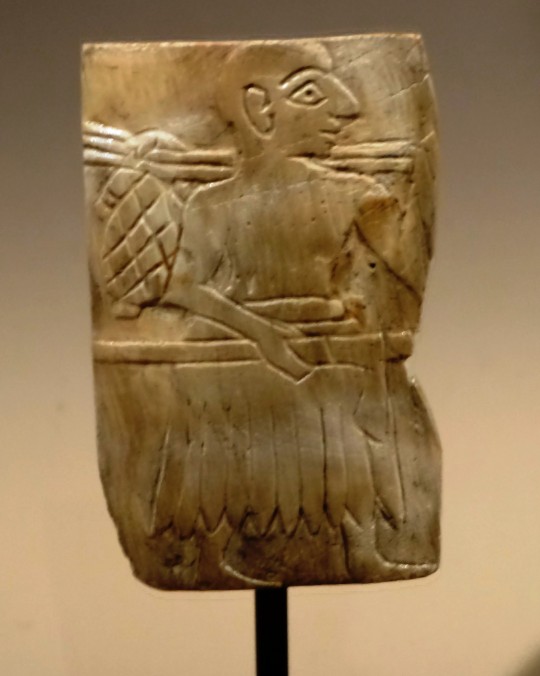
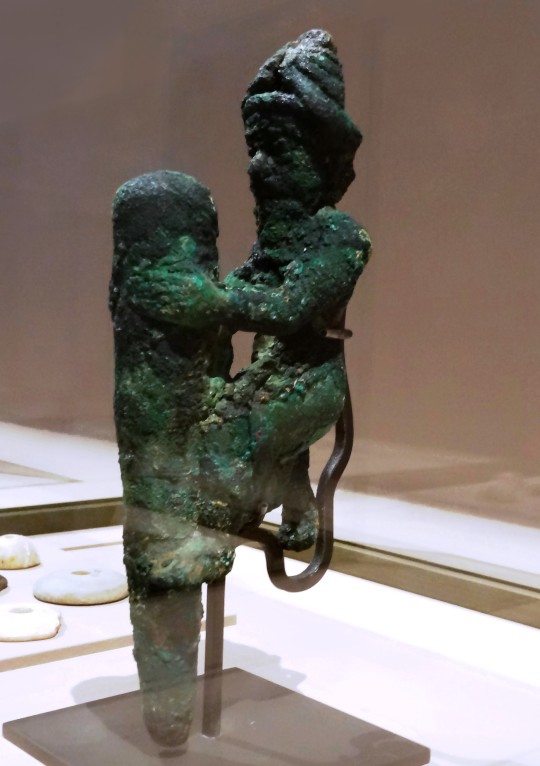
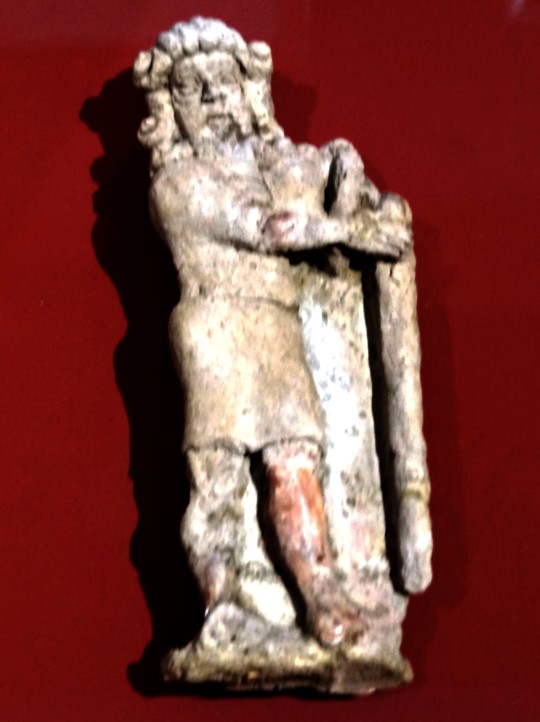
Nouveau retour à mon projet de présenter la plupart de mes 55500 photos (et des brouettes). Plus trop loin du présent….
2016. Au Louvre-Lens, il y eut une expo : “L’Histoire commence en Mésopotamie”
- les 3 premières : kudurru, stèle de donation en serpentine - Bronze Récent, sous le règne de Marduk-nadin-ahhe
- pêcheur - époque Amorrite, 2000 av.J-C.
- clou de fondation - Girsu, époque Néo-Sumérienne sous le règne de Gudea 2100 av. J-C.
- figurine de fondation - Dur-Sharrukin, époque Néo-Assyrienne sous le règne de Sargon II, 700 av.J-C.
#souvenirs#louvre-lens#expo#archéologie#l'histoire commence en mésopotamie#mésopotamie#kudurru#stèle#serpentine#marduk#amorrite#clou de fondation#néo-sumérien#sumérien#girsu#gudea#dur-sharrukin#néo-assyrien#assyrien
2 notes
·
View notes
Text


28th October 23 A joint Iraqi-French archaeological mission have uncovered a Lamassu at the Dur-Sharrukin archaeological site, Khorsabad, in Nineveh, Iraq.
207 notes
·
View notes
Note
King Gilgamesh from the Epic of Gilgamesh (the first story in recorded history)
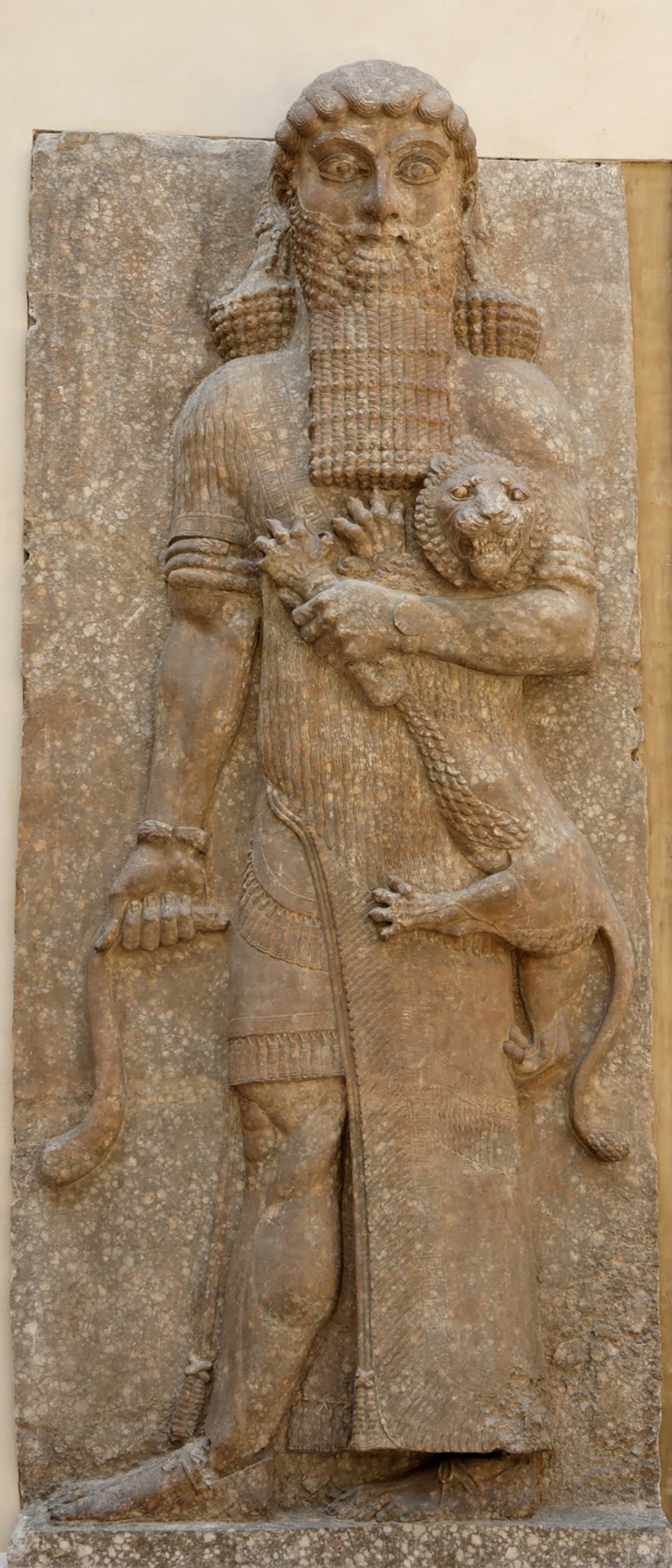
Please reblog for a larger sample size.
Possible representation of Gilgamesh as Master of Animals, in an Assyrian palace relief (713–706 BCE), from Dur-Sharrukin, now held in the Louvre.
#polls#epic of gilgamesh#king gilgamesh#very sure that the 'now held in the louvre' is just wikipedia's nice way of saying 'stolen by the french'
33 notes
·
View notes
Photo
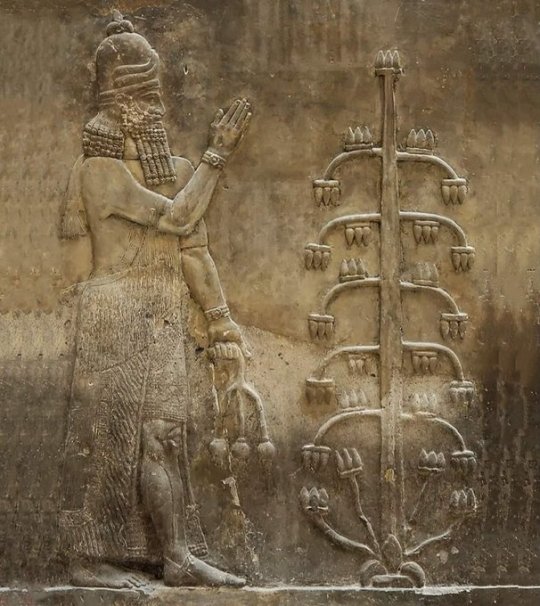
Assyrian stone relief sculptured panel of an Assyrian Genie with poppy seed heads next to the Assyrian sacred tree, dating to 713-706 BC, from Sargon II’s Palace at Dur-Sharrukin in Assyria.
Excavated by French archaeologist Paul-Émile Botta in 1843–1844.
Louvre Museum
15 notes
·
View notes
Text

Baixo-relevo con cabalos de Dur Sharrukin, pazo do rey asirio Sargón II en Khorsabad, 713-706 a. C. (Louvre)
19 notes
·
View notes
Text

Lamassu, the relief of the scorching Sargon II at Dur Sharrukin in Assyria (now Khorsabad in Iraq), from around 713-716 BCE.
11 notes
·
View notes
Text
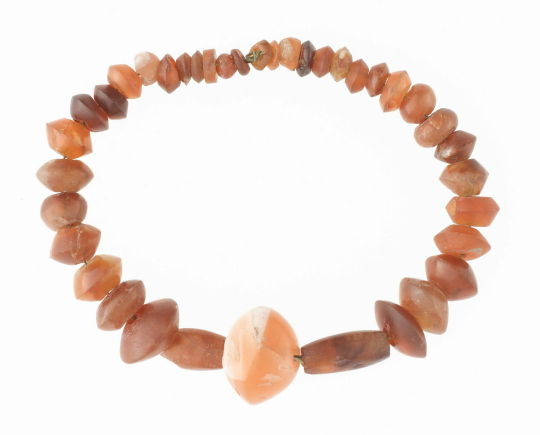
Carnelian bracelet uncovered near Dur Sharrukin, Iraq, circa 700 BC
from The Louvre
183 notes
·
View notes
Photo

Decorative boss,ca. 8th century B.C.
This curved object, carved from a thick piece of shell and decorated with small circles and dots, was part of a group of 18 similar pieces found in a well in the Northwest Palace of Ashurnasirpal II at Nimrud. They were probably thrown into the well when the palace was sacked, in 614 B.C. and then again two years later. Their function is mysterious. All were pierced in the center and in some examples a nail remained in the central hole, which must have fastened the shell to a backing in some other material, perhaps wood. Other objects found in the same well can be identified as horse trappings, such as the small shell ornaments and studs also in the Metropolitan Museum’s collection (54.117.16-.19). These were probably part of a leather harness, which disintegrated in the well sludge. Horses in the reliefs of the palace of Sargon II at Dur Sharrukin (modern Khorsabad) are represented with similar double-fan shaped ornaments on their bridles, as in a relief in the Metropolitan Museum (33.16.1) showing a groom with two horses. This suggests that the other shell pieces found with the harness ornaments may have also been used for outfitting horses, perhaps affixed to a chariot as decoration. Because of the close parallel with the reliefs from the palace at Dur Sharrukin, the equestrian harness elements from this well probably date to the time of Sargon in the late eighth century B.C. At this time, the Northwest Palace was primarily used for storage rather than as a royal residence.
29 notes
·
View notes
Text
Dur-Sharrukin es una antigua ciudad asiria fundada a fines del siglo VIII a. C. La ciudad fue establecida por Sargón II para servir como su nueva capital. Sin embargo, Sargón murió antes / poco después de que se completara la ciudad.
1 note
·
View note
Text
The "Epic of Gilgamesh" is a masterpiece of world literature that transcends time and continues to fascinate readers to this day.
In the Epic of Gilgamesh, a notable passage is when Gilgamesh and Enkidu, his companion, face the terrible celestial bull sent by the gods to punish the king's arrogance.
In this passage, we witness the courage and determination of the two heroes, who join forces to face this divine threat.
The confrontation is described with vivid intensity, as Gilgamesh and Enkidu demonstrate their valor and skill in an epic battle.
This passage not only highlights Gilgamesh's heroic deeds, but also reveals his humanity as he faces supernatural challenges, highlighting his complexity as a character and his position as one of the most iconic heroes in world literature.
Written more than 4,000 years ago, this epic poem transports us to an ancient world, full of myths, adventures and reflections on the human condition.
Through the journeys of the hero Gilgamesh, we are led to explore universal themes such as friendship, mortality, the search for the meaning of life and the relationship between the divine and the human.
Its gripping narrative and captivating characters capture the reader's imagination, while its timeless messages resonate across centuries, demonstrating the enduring power of great literature to connect cultures and generations.
image:
Possible representation of Gilgamesh as Master of Animals, holding a lion in his left arm and a snake in his right hand, in a relief from an Assyrian palace (713-706 BC), by Dur-Sharrukin, now kept in the Louvre
#edisonmariotti @edisonblog
.br
O "Épico de Gilgamesh" é uma obra-prima da literatura mundial que transcende o tempo e continua a fascinar os leitores até hoje.
Na Epopéia de Gilgamesh, uma passagem notável é quando Gilgamesh e Enkidu, seu companheiro, enfrentam o terrível touro celestial enviado pelos deuses para punir a arrogância do rei.
Nessa passagem, testemunhamos a coragem e a determinação dos dois heróis, que unem suas forças para enfrentar essa ameaça divina.
O confronto é descrito com uma intensidade vívida, enquanto Gilgamesh e Enkidu demonstram sua valentia e habilidade em uma batalha épica.
Essa passagem não apenas destaca os feitos heróicos de Gilgamesh, mas também revela sua humanidade ao enfrentar desafios sobrenaturais, ressaltando sua complexidade como personagem e sua posição como um dos mais emblemáticos heróis da literatura mundial.
Escrito há mais de 4.000 anos, este poema épico nos transporta para um mundo antigo, repleto de mitos, aventuras e reflexões sobre a condição humana.
Através das jornadas do herói Gilgamesh, somos levados a explorar temas universais como amizade, mortalidade, busca pelo significado da vida e a relação entre o divino e o humano.
Sua narrativa envolvente e seus personagens cativantes capturam a imaginação do leitor, enquanto suas mensagens atemporais ressoam ao longo dos séculos, demonstrando o poder duradouro da grande literatura em conectar culturas e gerações.
image:
Possível representação de Gilgamesh como Mestre dos Animais, segurando um leão no braço esquerdo e uma cobra na mão direita, em relevo de um palácio assírio (713-706 aC), de Dur-Sharrukin, agora mantido no Louvre

0 notes
Text
Un experto en Mesopotamia explica que el efecto de los 5 símbolos fue inmortalizar el nombre del rey, colocándolo en los cielos “por toda la eternidad”.
El Dr. Martin Worthington, asiriólogo de la Universidad de Dublín, explicó los misteriosos símbolos de un templo del 700 a C., en la antigua ciudad de Dur Sharrukin, cerca de la actual Jorsabad (norte de Irak), que han desconcertado a los expertos durante más de un siglo.
Continue reading “Escrito en los cielos”: Resuelven un misterio de hace 2.700 años
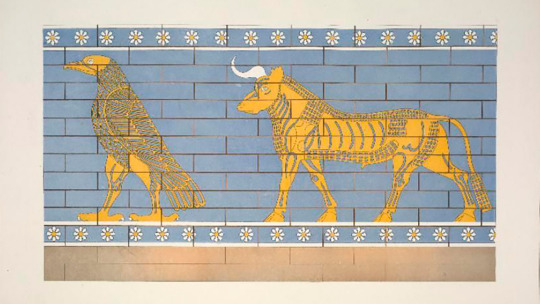
View On WordPress
0 notes
Text
Some Letters from Sennacherib
Some Letters from Sennacherib
by
Damien F. Mackey
“If the “king, my lord,” was Shalmaneser, we must conclude that Sargon built
the city of Dur-Sharrukin, (“Sargon’s Fortress”), when he was still a prince,
i.e., before 721 B.C.”.
Brazilian correspondent
A Brazilian researcher has written to me concerning a series of letters of Sennacherib that are generally thought to constitute his…
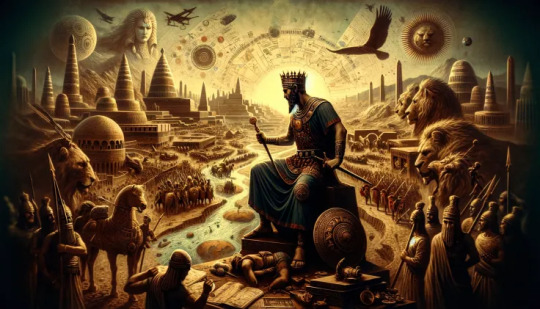
View On WordPress
0 notes
Text

Mesopotamian human-headed winged bull: the Assyrian guardian spirit called Lamassu or Kerub —known afterwards in Latin as *cherub: this, in turn, from the Hebrew linguistic customization *kerubh [כְּרוּב], where the original Akkadian *karâbu —infuriated guardians of sacred doors— would result in the implacable angels of Elohim [אֱלהִים] known as kĕrûvîm, as depicted in Gen. 3:24:
“So the Lord drove out the man; and he placed at the east of the Garden of Eden kĕrûvîm and a flaming sword which turned every way, to keep the way of the tree of life.”
*Palace of Assyrian king Sargon II at Dur Sharrukin in Assyria (now Khorsabad, Northern Iraq) ~ ca.713 BC British Museum. Thanx Dominique Artis Photographie
0 notes
Text

This winged-bull, known as a lamassu from textual sources, was given to the Ol by the Department of Antiquities in Iraq. The Assyrian sculpture was discovered in northern Iraq when archaeologists from the Ol, including Edward Chiera, were excavating at Khorsabad (Dur-Sharrukin) in 1929. It originally guarded the throne room of Sargon II, King of Assyria (721-705 BC).
The lamassu is a mythological hybrid, a protective deity known to "turn back an evil person," that is composed of the head of a human, the body of a bull, and the wings of a bird. These figures are depicted in the Epic of Gilgamesh, one of the textual sources for the iconography of these figures.
The Ol's lamassu has five legs, which was typical for those created during Sargon II's reign. This "double-aspect" causes the figure to appear to be standing or walking when viewed either from the front or the side, respectively. This winged-bull is almost five meters (16 feet) tall and weighs approximately 40 tons.
The large sculpture fragments that were excavated at Khorsabad were packed in crates and transported to Chicago, where they were brought into the Ol Museum through the wall of the gallery as it was being built in 1930. It was then restored and assembled on the same spot. Its massiveness required the floor to be reinforced and the building to be built around it, which ensures that the Ol's lamassu will never be moved to another spot in the museum or loaned to another institution.
#lamassu #Antiquities #Assyrian #sculpture #EdwardChiera #Khorsabad #SargonII #mythological #Gilgamesh #Museum #Temple #Ancient #History #Historyfacts #Historic #Historical


0 notes
Text
Just leaving this here for anyone interested in archaeology.
This was in Khorsabad (Dur-Sharrukin), which was plundered and ruined by those bastards in ISIS a few years ago.
Apparently.
Feel free to reblog.
#dougie rambles#news#middle east#mesopotamia#iraq#fuck isis#assyria#bethnahrin#nineveh#archaeology#statue#lamassu#khorsabad#feel free to reblog#political crap#sort of#kind of#history#ancient history#Assyrian history#Assyrian heritage#statues#heritage
1 note
·
View note